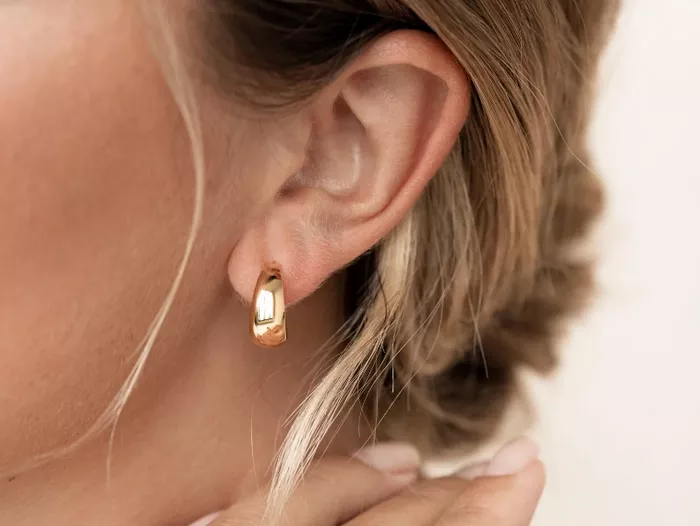Diamonds have captivated humanity for centuries with their brilliance, rarity, and enduring value. However, discerning whether a diamond ring is genuine or not can be a daunting task, especially with the proliferation of synthetic diamonds and diamond simulants in the market. This article aims to equip you with the knowledge and tools necessary to confidently determine the authenticity of a diamond ring, covering various methods from basic visual inspections to advanced gemological testing.
Understanding Diamond Types and Terminology
Before delving into detection methods, it’s essential to grasp the terminology associated with diamonds:
Natural Diamonds: Formed deep within the Earth over millions of years, natural diamonds are prized for their rarity and natural beauty. They are composed of pure carbon crystallized under high pressure and temperature.
Synthetic Diamonds: Also known as lab-grown or man-made diamonds, these are produced in a laboratory under controlled conditions that mimic the natural diamond formation process. They have the same chemical composition and physical properties as natural diamonds but are created in a much shorter timeframe.
Diamond Simulants: These are materials that resemble diamonds but have different chemical compositions. Common simulants include cubic zirconia (CZ), moissanite, and white sapphire. While they may look similar to diamonds, they are not true diamonds.
Visual Inspection: Basic Tests for Authenticity
1. Check for Imperfections and Inclusions
Natural diamonds often have imperfections or inclusions, which are internal characteristics such as minerals, fractures, or crystals. These imperfections are typically not found in synthetic diamonds or simulants produced in controlled environments. Use a jeweler’s loupe (a small magnifying glass) with at least 10x magnification to inspect the stone closely.
Natural Diamonds: Look for tiny crystals, feathers (small fractures), or other internal characteristics that indicate natural formation.
Synthetic Diamonds: These may have fewer or different types of inclusions compared to natural diamonds, often resembling patterns or features that indicate their lab-grown origin.
Diamond Simulants: Simulants like CZ or moissanite may appear flawless under magnification, lacking the internal characteristics of natural diamonds.
2. Examine the Mounting and Setting
The setting of a diamond ring can provide clues about its authenticity:
Metal Stamps: Look for stamps or markings on the inside of the ring band indicating the type of metal used (e.g., “18K” for 18 karat gold). Authentic diamond rings are typically set in high-quality metals such as gold, platinum, or silver.
Prong Settings: In natural diamond rings, prongs are often delicate and precisely crafted to secure the stone. Settings in synthetic diamonds or simulants may appear less refined or exhibit different construction methods.
3. Assess Diamond Clarity and Transparency
Diamonds are renowned for their exceptional clarity and transparency:
Brilliance and Sparkle: Natural diamonds reflect light in a unique way, known as brilliance. They disperse light into a spectrum of colors (fire) and exhibit scintillation (flashes of light and dark). Synthetic diamonds and simulants may lack the same fire and scintillation as natural diamonds.
Transparency: Place the diamond under a bright light and observe how light passes through it. Natural diamonds are highly transparent, whereas simulants like CZ may exhibit more colorful flashes or rainbow effects due to their different optical properties.
See Also: Where Do I Sell My Diamond Ring?
Advanced Testing Methods: Tools and Techniques
When visual inspections are inconclusive, more advanced testing methods can provide definitive answers regarding diamond authenticity:
1. Use of Diamond Testers
Diamond testers are handheld devices that use thermal conductivity to distinguish between diamond and diamond simulants. They are based on the principle that diamonds conduct heat differently than simulants:
Thermal Conductivity Test: Touch the tip of the diamond tester to the surface of the stone. A natural diamond will disperse heat quickly and remain cool, whereas simulants like CZ or moissanite will retain heat and may emit a beeping sound or show a different reading on the tester.
2. UV Light Test
Some diamonds fluoresce under ultraviolet (UV) light, emitting a blue or white glow. This fluorescence is a natural property of some diamonds and can help differentiate them from simulants:
UV Lamp Examination: Shine a UV lamp on the diamond. Natural diamonds with fluorescence will emit a glow, whereas simulants like CZ or moissanite generally do not fluoresce or may exhibit a different color glow.
3. Professional Gemological Testing
For the most accurate assessment, consider professional gemological testing by a certified gemologist or a reputable gemological laboratory:
Grading Reports: Request a diamond grading report (e.g., from GIA – Gemological Institute of America) for detailed information about the diamond’s characteristics, including its cut, color, clarity, and carat weight.
Advanced Testing Equipment: Gemologists use specialized equipment such as microscopes, spectrometers, and refractometers to analyze diamonds and determine their authenticity.
Conclusion
Determining whether a diamond ring is real involves a combination of visual inspections, basic tests, and sometimes advanced gemological techniques. While visual clues such as imperfections and setting quality can provide initial insights, tools like diamond testers and UV lamps offer more definitive results. For valuable or sentimental pieces, consulting a professional gemologist or obtaining a diamond grading report can provide peace of mind regarding authenticity. Armed with this knowledge, you can confidently assess diamond rings and make informed decisions when purchasing or verifying the authenticity of diamond jewelry. Whether it’s an heirloom passed down through generations or a recent acquisition, knowing how to tell if a diamond ring is real ensures that its beauty and value endure for years to come.


